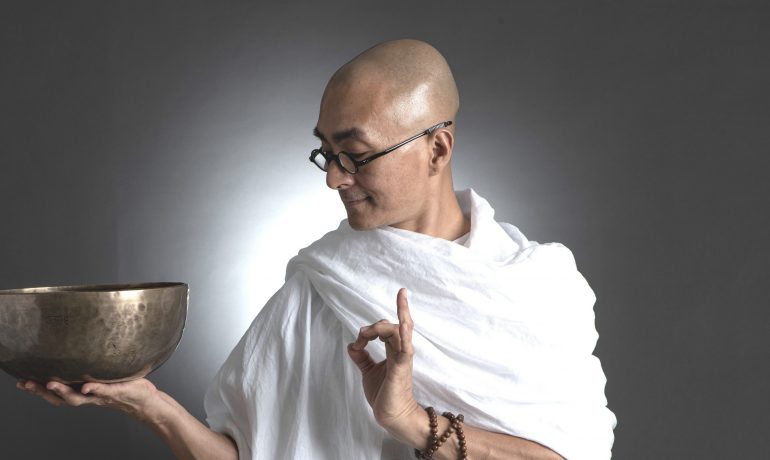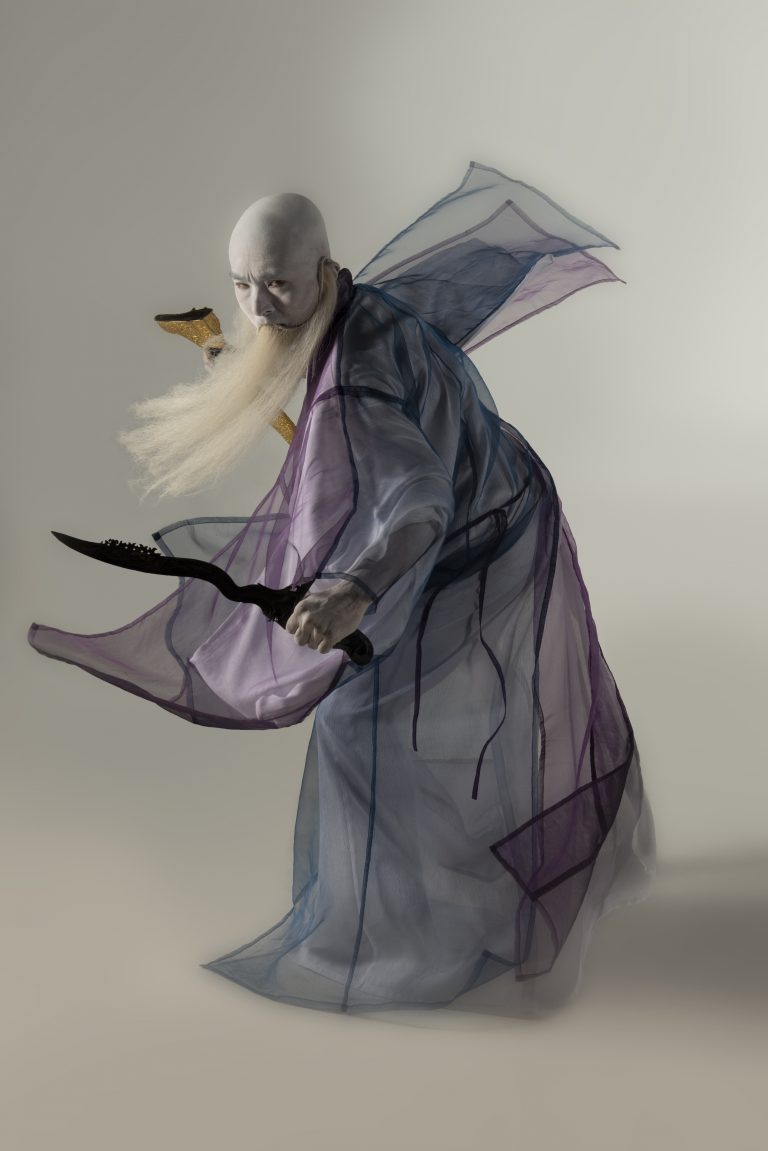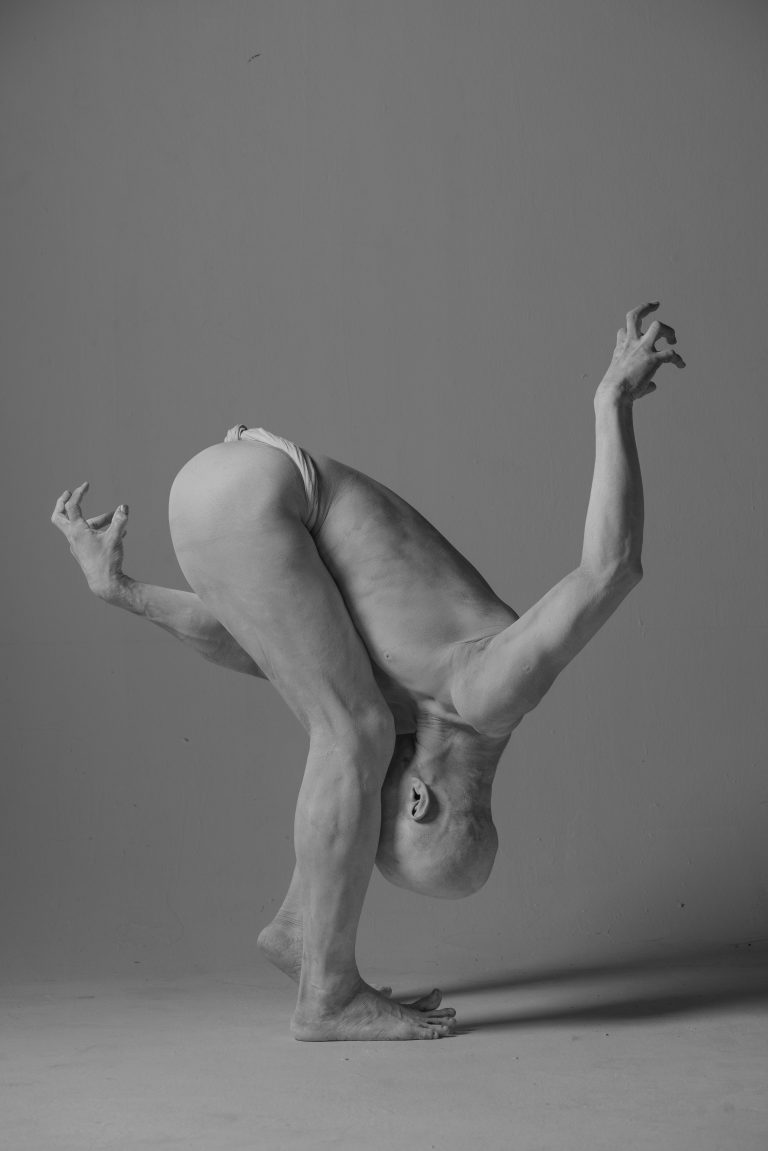What happens when a Malaysian dancer meets a Japanese artform? Lee Swee Keong’s long time pursuit of butoh sheds light on how cultures connect, and how change is inevitable.
By Jo Ch’ng
Though connections frequently bring more people together, some lead us down a lonely path.
None more evident than the intriguing career of Lee Swee Keong, perhaps Malaysia’s only remaining active butoh dancer.
On Connection
For almost 30 years, Lee has pursued butoh, a disquieting dance form that began in post-war Japan. Butoh is a dance associated with darkness. Slow, controlled, or intense movements combine with playful or grotesque imagery to create unsettling performances. Avant-garde and unrestricted, the abstract movements and white-painted dancers often leave audiences feeling off-kilter. For Lee, the connection was instantaneous. It was a feeling that had him traveling between KL and Singapore in the dead of night, all for a chance to watch an other-worldly performance.
“Everyone has something they feel connected to. Some people cook, some people write, I do butoh,” he says.
His affinity for butoh is rare.
“Not many people can accept or appreciate it.” Despite the disheartening words, Lee does not look disappointed or sad. He smiles. “It is difficult to accept. All over the world, it is the same, it has a limited audience.”
The art form encourages heightened awareness, a mindfulness that enables one to connect deeply with their own body. It does not seem to be something so easily understood by others, evidenced by the sparse number of butoh dancers in Malaysia.
“Few people like this style,” Lee adds. “Before this, I had students. But over time, life got in the way. Now, it’s just me.”
On Culture
For 12 years, Lee has been the showrunner of KL Butoh Fest, inviting guests from all over the world. When cultures touch, it is inevitable that they influence each other. Even so, Lee disagrees when people say his performances are influenced by Malaysian culture.
“I don’t consider my work ‘influenced’ by Malaysian culture,” he says, “I am Malaysian, born and bred. Anything I create is Malaysian by nature.”
Butoh performed by a Malaysian differs from butoh performed by a Japanese person, solely by virtue of the dancer being Malaysian. The essence of the dance, though still butoh, is no longer strictly Japanese purely because of each person’s cultural background.
Lee considers butoh a deeply spiritual and therapeutic practice. Elements of meditation, yoga, taichi and qigong are deeply embedded in his works. In a way, it is no longer merely a dance form, but nourishment for the body and a way of life.
On Creation and Change
Lee does not choreograph according to a set progression or outline. He prefers to try and unearth the potential of each body involved to create a performance. The main focus is not necessarily the movement itself, but the capacity for interactions between dancers.
“Butoh is like that sometimes, the more you think about it, the more confusing it gets.” He goes on to explain how each practitioner conceptualises the dance differently. Lee offers the words of butoh founder, Tatsumi Hijikata, “Perhaps my next creation will be butoh.”
Evidently, since butoh was meant to defy restraints, attempting to define it seems to defeat its entire purpose. Lee is not bothered by this; for him, change is inevitable.
“We all surpass our constraints eventually,” Lee says, “Not just for the sake of breaking boundaries, but because it is a natural part of growth.” His works have evolved over time. Though his performances are still rooted in butoh techniques, he does not consider some of his recent works butoh, choosing to call them meditative zen performances instead.
On Current Projects
“I have done what I wanted to do, I have no regrets,” he laughs, “There won’t be another KL Butoh Fest, all the admin work really gets to a person.”
While he has no plans to organise another festival, Lee remains active in the creative scene. He recently took part in Bakawali alongside several other artists and performers. The collaborative experimental performance was featured during the George Town Festival in July.
Aside from teaching yoga, he is currently working on a collaboration with ceramic artist and tea aficionado Ooi Woi Leong. Their performance is slated to debut in December at Whiteaways Arcade, Penang.
While butoh classes are not available for the time being, Lee welcomes all inquiries for workshops and collaborations.
Jo Ch’ng is a pop-culture enthusiast who likes reading and writing queer fiction. When they’re not active in the ACG scene, they enjoy translating, crafting, crochet, sewing, and mushrooms. Find out what else they’re up to at gingeronionfishmeat.



